Milwaukee 2950-20 Handleiding
Milwaukee
Batterij-oplader
2950-20
Bekijk gratis de handleiding van Milwaukee 2950-20 (20 pagina’s), behorend tot de categorie Batterij-oplader. Deze gids werd als nuttig beoordeeld door 16 mensen en kreeg gemiddeld 4.8 sterren uit 8.5 reviews. Heb je een vraag over Milwaukee 2950-20 of wil je andere gebruikers van dit product iets vragen? Stel een vraag
Pagina 1/20

Cat. No. / No de cat.
2950-20
OPERATOR'S MANUAL
MANUEL de L'UTILISATEUR
MANUAL del OPERADOR
WARNING To reduce the risk of injury, user must read and understand operator's manual.
AVERTISSEMENT An de réduire le risque de blessures, l'utilisateur doit lire et bien
comprendre le manuel.
ADVERTENCIA Para reducir el riesgo de lesiones, el usuario debe leer y entender el manual.
M18™ PACKOUT™ RADIO + CHARGER
M18™ PACKOUT™ RADIO + CHARGEUR
M18™ PACKOUT™ RADIO + CARGADOR

2
RADIO SAFETY
WARNING
1) Read these instructions.
2) Keep these instructions.
3) Heed all warnings.
4) Follow all instructions.
5) Do not use this apparatus near water.
6) Clean only with dry cloth.
7) Do not block any ventilation openings. Install in
accordance with the manufacturer’s instructions.
8) Do not install near any heat sources such as
radiators, heat registers, stoves, or other ap-
paratus (including ampliers that produce heat.)
9) Do not defeat the safety purpose of the polarized
or grounding-type plug. A polarized plug has two
blades with one wider than the other. A ground-
ing type plug has two blades and a third ground-
ing prong. The wide blade or the third prong are
provided for your safety. If the provided plug
does not t into your outlet, consult an electri-
cian for replacement of the obsolete outlet.
10) Protect the power cord from being walked on
or pinched particularly at plugs,convenience
receptacles,and the point where they exit from
the apparatus.
11) Only use attachments/accessories specied
by the manufacturer.
12) Use only with the cart, stand, tripod, bracket,
or table specified by the manufacturer, or
sold with the apparatus. When a cart is used,
use caution when moving the cart/apparatus
combination to avoid injury from tip-over.
13) Unplug this apparatus during lightning storms
or when unused for long periods of time.
14) Refer all servicing to qualied service person-
nel. Servicing is required when the apparatus
has been damaged in any way,such as power-
supply cord or plug is damaged, liquid has
been spilled or objects have fallen into the
apparatus, the apparatus has been exposed
to rain or moisture, does not operate normally,
has been dropped, or is missing battery doors.
15)
WARNING
To reduce the risk of fire or
electric shock, do not expose
this apparatus to rain or moisture. Do not place
open ames or candles near or on the radio.
16) Only plug power supply into readily accessible out-
let to allow the appliance to be unplugged quickly.
17) Only operate this apparatus in a well-ventilated
area.
18) A battery operated radio with integral batteries or
a separate battery pack must be recharged only
with the specied charger for the battery. A char
-
ger that may be suitable for one type of battery may
create a risk of re when used with another battery.
19) Use battery operated radio only with speci-
cally designated battery packs. Use of any other
batteries may create a risk of re.
20) When battery pack is not in use, keep it away
from other metal objects like: paper clips,
coins, keys, nails, screws, or other small metal
objects that can make a connection from one
terminal to another. Shorting the battery terminals
together may cause sparks, burns, or a re.
21) Avoid body contact with grounded surfaces
such as pipes, radiators, ranges and refrigera-
tors. There is an increased risk of electric shock if
your body is grounded.
22) Do not use any adaptor plugs.
23) When operating a radio outside, use an outdoor
extension cord marked “W-A” or “W”. These
cords are rated for outdoor use and reduce the
risk of electric shock.
24) Never disassemble the radio or try to do any
rewiring on the radio's electrical system.
25) Do not expose this apparatus to dripping and
splashing, or place objects lled with liquids
on this unit.
26) Maintain labels and nameplates. These carry
important information. If unreadable or missing,
contact a MILWAUKEE service facility for a free
replacement.
27) This radio + charger is designed to be pow-
ered by a standard 120 volt AC line or AC
generator. The radio can also be powered using
a MILWAUKEE M18™ Li-Ion battery pack. Radio
+ charger must be plugged into an appropriate
receptacle. Do not attempt to use with any other
voltage or power supply.
CHARGER SAFETY
28) SAVE THESE INSTRUCTIONS - THIS OP-
ERATOR’S MANUAL CONTAINS IMPORTANT
SAFETY AND OPERATING INSTRUCTIONS
FOR MILWAUKEE LI-ION M18™ RADIO +
CHARGER.
29) BEFORE USING, READ THIS OPERATOR’S
MANUAL, YOUR BATTERY PACK OPERA-
TOR’S MANUAL, AND ALL LABELS ON THE
BATTERY PACK AND RADIO + CHARGER.
30) CAUTION - TO REDUCE THE RISK OF IN-
JURY, CHARGE MILWAUKEE LI-ION PACKS
ONLY IN THEIR MILWAUKEE LI-ION CHAR-
GER. Other types of chargers may cause per
-
sonal injury or damage. Battery pack and charger
are not compatible with ™-technology or NiCd V
systems. Do not wire a battery pack to a power
supply plug or car cigarette lighter. Battery packs
will be permanently disabled or damaged.
31) AVOID DANGEROUS ENVIRONMENTS. Do
not charge battery pack in rain, snow, damp or
wet locations. Do not use battery pack or char -
ger in the presence of explosive atmospheres
(gaseous fumes, dust or ammable materials)
because sparks may be generated when inserting
or removing battery pack, possibly causing re.
32) CHARGE IN A WELL VENTILATED AREA. Do
not block charger vents. Keep them clear to allow
proper ventilation. Do not allow smoking or open
ames near a charging battery pack. Vented gases
may explode.
33) MAINTAIN CHARGER CORD. When unplugging
charger, pull plug rather than cord to reduce the risk
of damage to the electrical plug and cord. Never car-
ry charger by its cord. Keep cord from heat, oil and
sharp edges. Make sure cord will not be stepped
on, tripped over or subjected to damage or stress.
Do not use charger with damaged cord or plug.
Have a damaged charger replaced immediately.
34) DO NOT SHORT CIRCUIT. A short circuited
battery pack may cause re, personal injury, and
product damage. A battery pack will short circuit
if a metal object makes a connection between the
positive and negative contacts on the battery pack.
IMPORTANT SAFETY INSTRUCTIONS

3
Do not place a battery pack near anything that may
cause a short circuit, such as coins, keys or nails
in your pocket.
35) DO NOT ALLOW FLUIDS TO FLOW INTO BAT-
TERY PACK. Corrosive or conductive uids, such
as seawater, certain industrial chemicals, and
bleach or bleach containing products, etc., can
cause a short circuit.
36) DO NOT USE AN EXTENSION CORD UNLESS IT
IS ABSOLUTELY NECESSARY. Using the wrong,
damaged or improperly wired extension cord could
result in the risk of re and electrical shock. If an
extension cord must be used, plug the charger
into a properly wired 16 gauge or larger extension
cord with pins that are the same number, size and
shape as the pins on the charger. Make sure that
the extension cord is in good electrical condition.
37) USE ONLY RECOMMENDED ATTACHMENTS.
Use of an attachment not recommended or sold
by the battery charger or battery pack manufac-
turer may result in a risk of re, electric shock or
personal injury.
38) UNPLUG CHARGER when not in use. Remove
battery packs from unplugged chargers.
39) TO REDUCE THE RISK OF ELECTRIC SHOCK,
always unplug charger before cleaning or main-
tenance. Use a Ground Fault Circuit Interrupter
(GFCI) to reduce shock hazards.
40) STORE YOUR BATTERY PACK AND CHARGER
in a cool, dry place. Do not store battery pack
where temperatures may exceed 120°F (50°C)
such as in direct sunlight, a vehicle or metal build-
ing during the summer.
Federal Communications Commission
WARNING
Changes or modications to
this unit not expressly ap-
proved by the party responsible for compli-
ance could void the user’s authority to operate the
equipment.
This equipment has been tested and found to
comply with the limits for a Class B digital device,
pursuant to Part 15 of the FCC Rules. These lim-
its are designed to provide reasonable protection
against harmful interference in a residential instal-
lation. This equipment generates, uses and can
radiate radio frequency energy and, if not installed
and used in accordance with the instructions, may
cause harmful interference to radio communications.
However, there is no guarantee that interference will not
occur in a particular installation. If this equipment does
cause harmful interference to radio or television recep-
tion, which can be determined by turning the equipment
o and on, the user is encouraged to try to correct the
interference by one or more of the following measures:
• Reorient or relocate the receiving antenna.
• Increase the separation between the equipment and
receiver.
• Connect the equipment into an outlet on a circuit
dierent from that to which the receiver is connected.
• Consult the dealer or an experienced radio/TV
technician for help.
EXTENSION CORDS
Double insulated tools can use either a two or three
wire extension cord. As the distance from the sup-
ply outlet increases, you must use a heavier gauge
extension cord. Using extension cords with inad-
equately sized wire causes a serious drop in voltage,
resulting in loss of power and possible tool damage.
Refer to the table shown to determine the required
minimum wire size.
The smaller the gauge number of the wire, the greater
the capacity of the cord. For example, a 14 gauge
cord can carry a higher current than a 16 gauge cord.
When using more than one extension cord to make
up the total length, be sure each cord contains at
least the minimum wire size required. If you are using
one extension cord for more than one tool, add the
nameplate amperes and use the sum to determine
the required minimum wire size.
Guidelines for Using Extension Cords
• If you are using an extension cord outdoors, be sure
it is marked with the sux “W-A” (“W” in Canada) to
indicate that it is acceptable for outdoor use.
• Be sure your extension cord is properly wired and in
good electrical condition. Always replace a damaged
extension cord or have it repaired by a qualied
person before using it.
• Protect your extension cords from sharp objects,
excessive heat and damp or wet areas.
• Unplug all cords during lightning storms or when
unused for long periods of time.
Recommended Minimum Wire Gauge
For Extension Cords*
Nameplate Amps
Extension Cord Length
25' 50' 75' 100' 150'
0 - 2.0
2.1 - 3.4
3.5 - 5.0
5.1 - 7.0
7.1 - 12.0
12.1 - 16.0
16.1 - 20.0
18
18
18
18
16
14
12
18
18
18
16
14
12
10
18
18
16
14
12
10
--
18
16
14
12
10
--
--
16
14
12
12
--
--
--
* Based on limiting the line voltage drop to ve volts at 150%
of the rated amperes.
CAUTION: TO REDUCE THE RISK OF ELECTRIC
SHOCK, DO NOT REMOVE COVER (OR BACK). NO
USER-SERVICABLE PARTS INSIDE. REFER SERVICI-
ING TO QUALIFIED SERVICE PERSONNEL.
RISK OF ELECTRIC SHOCK
DO NOT OPEN
CAUTION
- The lightning ash with arrowhead symbol, within an equi
lateral triangle, is intended to alert the user to the presence
of uninsulated "dangerous voltage" within the product's
enclosure that may be of sucient magnitude to constitute
a risk of electric shock to persons.
- The exclamation point within an equilateral triangle is in
tended to alert the user to the presence of important operat-
ing and maintenance (servicing) instructions in the literature
accompanying the appliance.
Product specificaties
| Merk: | Milwaukee |
| Categorie: | Batterij-oplader |
| Model: | 2950-20 |
Heb je hulp nodig?
Als je hulp nodig hebt met Milwaukee 2950-20 stel dan hieronder een vraag en andere gebruikers zullen je antwoorden
Handleiding Batterij-oplader Milwaukee
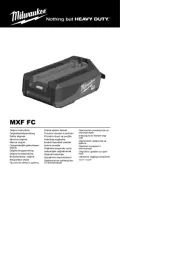
15 Juni 2025

15 Juni 2025

10 Juni 2024

10 Juni 2024

16 Juni 2023

13 Mei 2023

26 April 2023

17 April 2023

12 April 2023

3 April 2023
Handleiding Batterij-oplader
- Targus
- Tryton
- Zipper
- EA Elektro Automatik
- Ergotron
- Kenwood
- Voltcraft
- Philips
- Black Diamond
- Kress
- Digipower
- E-flite
- DCU
- Black And Decker
- HP
Nieuwste handleidingen voor Batterij-oplader
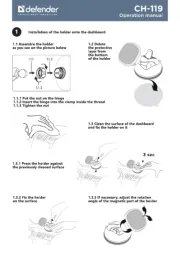
16 September 2025
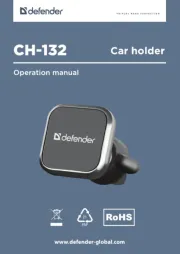
15 September 2025
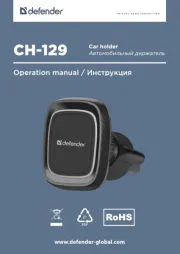
15 September 2025
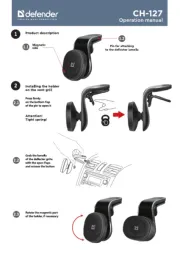
15 September 2025
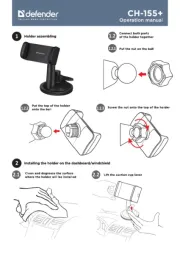
15 September 2025
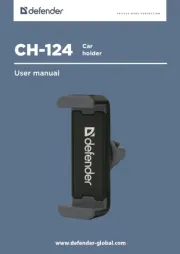
15 September 2025
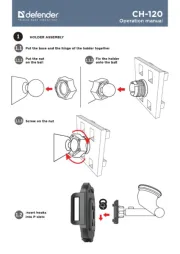
15 September 2025
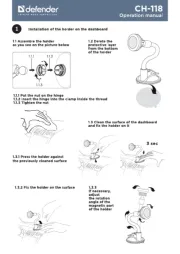
15 September 2025
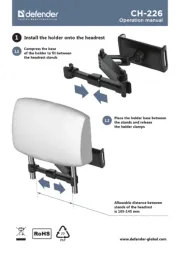
15 September 2025
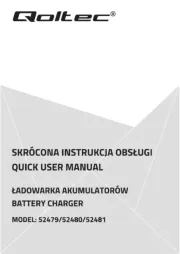
12 September 2025